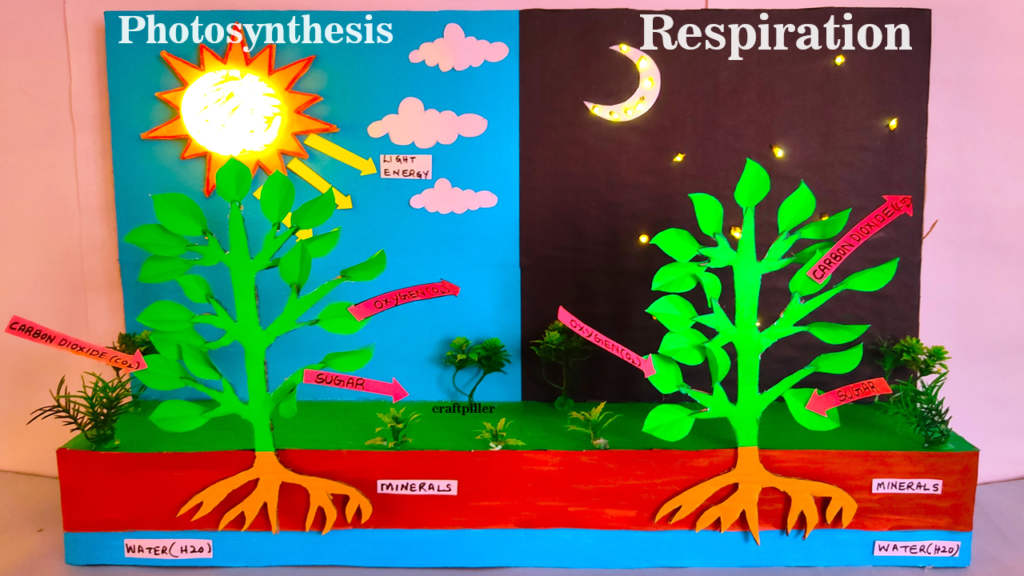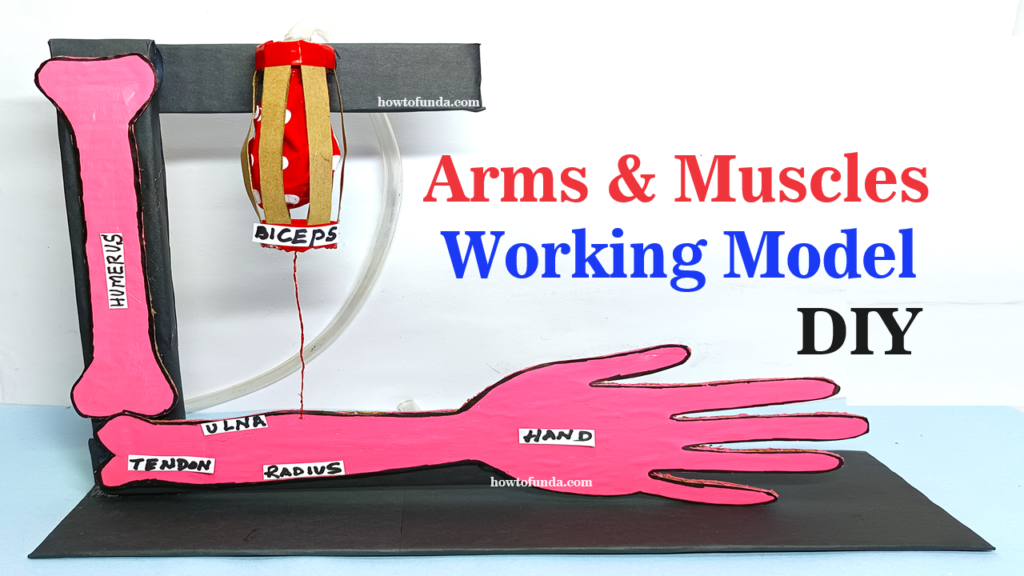Introduction
Life processes are fundamental biological functions that are essential for the survival, growth, and reproduction of living organisms.

These processes include nutrition, respiration, transportation, excretion, movement, reproduction, and sensitivity. Understanding these processes helps students grasp the basic principles of biology and the intricate mechanisms that sustain life.
This project will explore each life process in detail, providing a comprehensive guide for school students.
1. Nutrition
1.1. Definition and Importance
Nutrition is the process by which organisms obtain and utilize the nutrients necessary for their growth, energy, and maintenance. Proper nutrition is essential for health and survival.
1.2. Types of Nutrition

- Autotrophic Nutrition:
- Organisms like plants produce their own food through photosynthesis using sunlight, carbon dioxide, and water.
- This process occurs in chloroplasts and can be summarized by the equation: 6CO2+6H2O+light energy→C6H12O6+6O2
- Heterotrophic Nutrition: Organisms like animals and fungi obtain food by consuming other organisms. This can be further categorized into:
- Herbivores: Consume plants (e.g., cows, rabbits).
- Carnivores: Consume other animals (e.g., lions, hawks).
- Omnivores: Consume both plants and animals (e.g., humans, bears).

- Mouth: Begins mechanical digestion through chewing and chemical digestion with saliva.
- Esophagus: Transports food to the stomach.
- Stomach: Secretes acid and enzymes to digest proteins.
- Small Intestine: Most digestion and nutrient absorption occur here with the help of bile and pancreatic juices.
- Large Intestine: Absorbs water and forms feces.
- Liver: Produces bile to emulsify fats.
- Pancreas: Produces enzymes that digest carbohydrates, proteins, and fats.
2. Respiration
2.1. Definition and Importance
Respiration is the process of breaking down glucose to produce energy in the form of ATP (adenosine triphosphate). It is crucial for cellular functions and overall survival.
2.2. Types of Respiration
- Aerobic Respiration: Requires oxygen and produces more energy.
- Anaerobic Respiration: Occurs in the absence of oxygen and produces less energy. In muscles, it leads to lactic acid formation, while in yeast, it results in alcohol and carbon dioxide.

- Nose and Nasal Cavity: Filter, warm, and humidify the air.
- Pharynx and Larynx: Passageway for air; the larynx contains the vocal cords.
- Trachea: Windpipe that directs air to the lungs.
- Bronchi and Bronchioles: Branch into the lungs.
- Lungs: Contain alveoli where gas exchange occurs.
- Diaphragm: Muscle that aids in breathing.
3. Transportation
3.1. Definition and Importance
Transportation involves the movement of nutrients, gases, and wastes to and from cells. This process is essential for maintaining homeostasis and supporting cellular functions.

- Heart: Pumps blood throughout the body. It has four chambers: two atria and two ventricles.
- Blood Vessels: Include arteries (carry blood away from the heart), veins (carry blood to the heart), and capillaries (exchange of substances with tissues).
- Blood: Composed of red blood cells (carry oxygen), white blood cells (fight infection), platelets (clotting), and plasma (liquid component).
3.3. Plant Transportation System
- Xylem: Transports water and minerals from roots to leaves.
- Phloem: Transports nutrients, especially sugars, from leaves to other parts of the plant.
4. Excretion
4.1. Definition and Importance
Excretion is the process of removing metabolic waste products from the body. This is vital for preventing toxic build-up and maintaining internal balance.

- Kidneys: Filter blood to produce urine.
- Ureters: Transport urine from kidneys to the bladder.
- Bladder: Stores urine.
- Urethra: Excretes urine from the body.
4.3. Plant Excretion
Plants excrete waste gases like oxygen (from photosynthesis) and carbon dioxide (from respiration) through stomata. They also excrete excess water through transpiration.
5. Movement

5.1. Definition and Importance
Movement is the ability of organisms to change position or place. It is crucial for finding food, escaping predators, and reproducing.
5.2. Human Musculoskeletal System
- Bones: Provide structure and support.
- Muscles: Work with bones to produce movement through contraction and relaxation.
- Joints: Allow flexibility and movement of the skeleton.
5.3. Plant Movement
- Tropisms: Directional growth responses to environmental stimuli. Examples include phototropism (toward light) and gravitropism (toward gravity).
- Nastic Movements: Non-directional responses to stimuli, such as the closing of leaves in the sensitive plant (Mimosa pudica).
6. Reproduction

6.1. Definition and Importance
Reproduction is the biological process by which new individual organisms are produced. It ensures the continuity of species.
6.2. Types of Reproduction
- Asexual Reproduction: Involves a single parent and produces genetically identical offspring. Methods include binary fission, budding, and vegetative propagation.
- Sexual Reproduction: Involves two parents and produces genetically diverse offspring. It includes the fusion of male and female gametes (sperm and egg).
6.3. Human Reproductive System
- Male Reproductive System: Includes testes (produce sperm), vas deferens, and penis.
- Female Reproductive System: Includes ovaries (produce eggs), fallopian tubes, uterus, and vagina.
6.4. Plant Reproduction
- Sexual Reproduction: Involves flowers, pollination, and seed formation.
- Pollination: Transfer of pollen from anther to stigma.
- Fertilization: Fusion of male and female gametes to form a zygote.
- Asexual Reproduction: Involves methods like cuttings, grafting, and layering.
7. Sensitivity (Response to Stimuli)
7.1. Definition and Importance
Sensitivity is the ability of organisms to detect and respond to changes in their environment. This is crucial for survival and adaptation.
7.2. Human Nervous System

- Central Nervous System (CNS): Composed of the brain and spinal cord. It processes information and coordinates responses.
- Peripheral Nervous System (PNS): Composed of nerves that connect the CNS to the rest of the body.
- Sense Organs: Detect stimuli (e.g., eyes for vision, ears for hearing, skin for touch).
7.3. Plant Responses
- Phototropism: Growth towards light.
- Gravitropism: Growth in response to gravity.
- Thigmotropism: Response to touch, seen in climbing plants like vines.
- Chemotropism: Growth response to chemicals, such as pollen tubes growing towards ovules.
8. Homeostasis
8.1. Definition and Importance
Homeostasis is the ability of an organism to maintain a stable internal environment despite external changes. This is vital for the proper functioning of cells and organs.
8.2. Human Homeostatic Mechanisms
- Temperature Regulation: Involves sweating, shivering, and blood flow adjustments.
- Blood Glucose Regulation: Insulin and glucagon hormones manage blood sugar levels.
- Water Balance: Kidneys regulate water through urine production.
8.3. Plant Homeostasis
- Transpiration: Regulates water balance and temperature.
- Stomatal Regulation: Controls gas exchange and water loss.
Conclusion
Understanding life processes is fundamental to biology.
These processes, including nutrition, respiration, transportation, excretion, movement, reproduction, sensitivity, and homeostasis, are essential for the survival and functioning of living organisms.
By studying these processes, students gain insight into the complex and interdependent systems that sustain life on Earth.
Through practical examples and detailed explanations, this project provides a comprehensive overview of the life processes that are crucial for both plants and animals.

